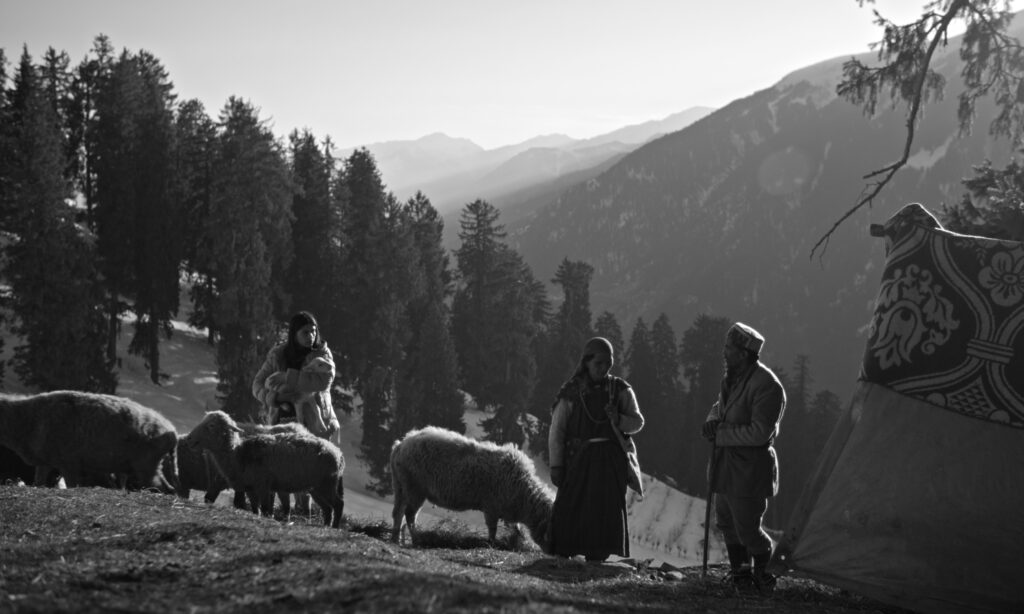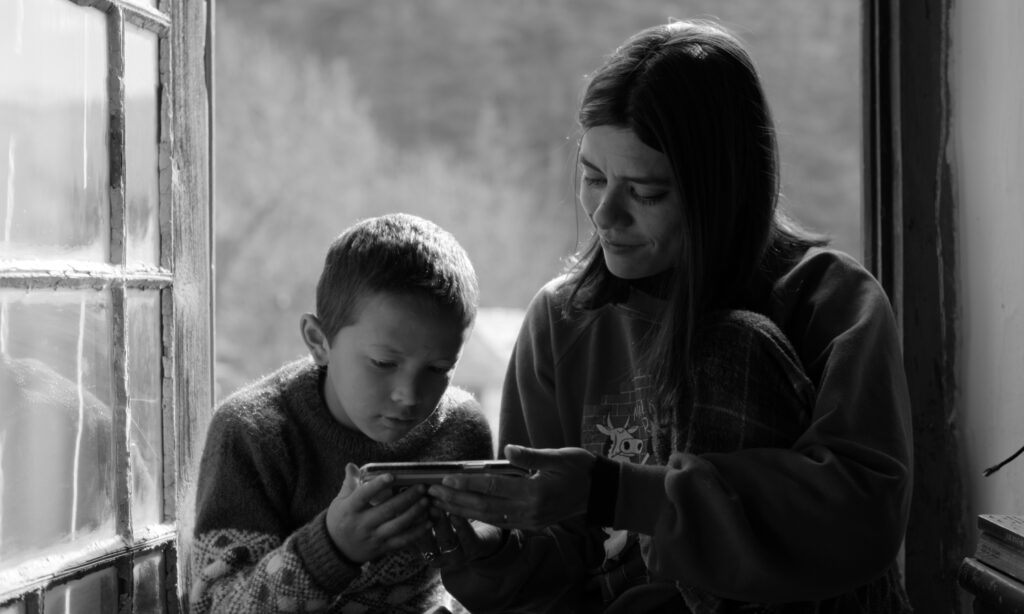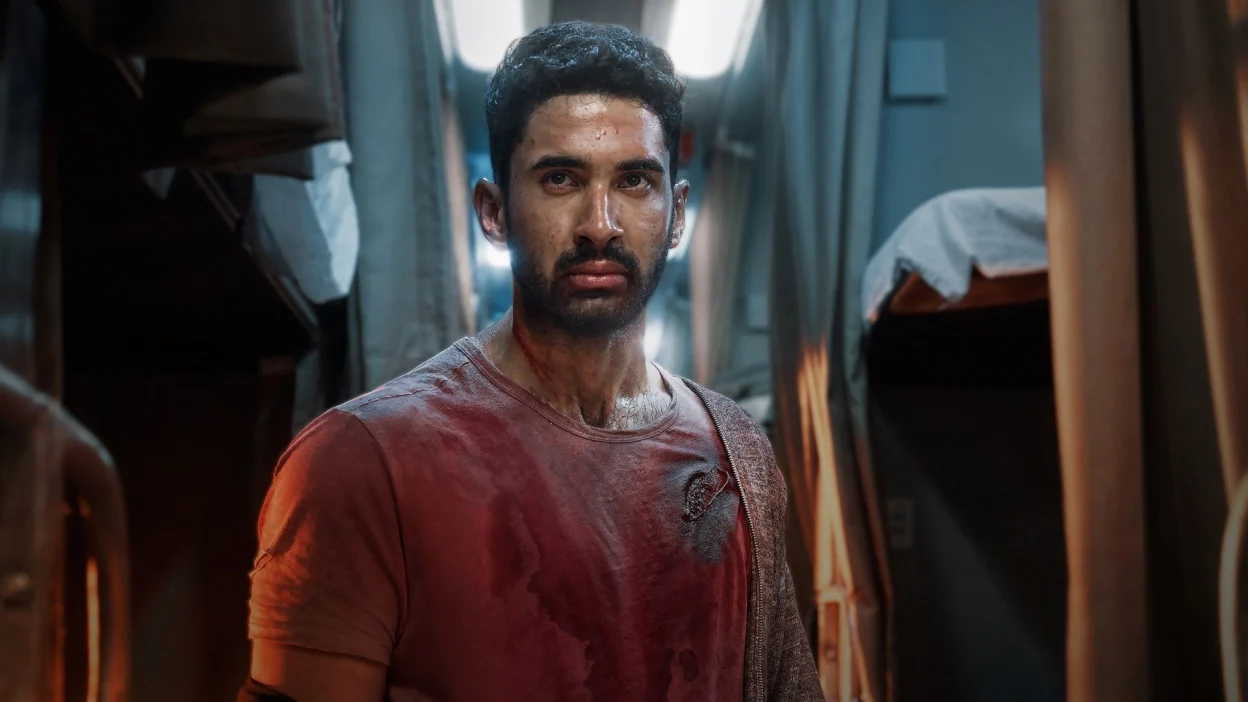Debutant filmmaker Subhadra Mahajan’s Second Chance (2024) is a gentle portrait of a young woman’s exploration of love, death, and the resurgence of hope. It centers around a protagonist who shrinks her mental space and tries to refuse the reality that eats her up from the inside. The evocative story follows a single, pregnant woman coping with abandonment by her boyfriend. Enhanced by a mournful score and naturalistic approach, the film seeks depth in a simple yet hopeful tale. This lends the story a certain simplicity, bringing it further into the realm of a humane tale and offering a thoughtful exploration of human relationships without overshadowing its primary focus. Mahajan’s storytelling style, which is slow-paced and introspective, can be seen as having a blend of deep affinity and detached observation. Instead of deeply immersing the viewers in the protagonist’s emotional struggles through melodrama, she approaches it with a detached yet empathetic observation, analyzing the emotions with a thoughtful distance. This approach allows for a more analytical exploration of the protagonist’s feelings than direct emotional immersion. It dissects heartache in its many forms and facets, be they physical, emotional, or even psychological. While its deliberate pacing and dramatic intensity may not appeal to all viewers, this introspective drama adeptly portrays a wide range of emotions, from the resilience of optimism to the debilitating effects of pain.
Nia (Dheera Johnson) is a young woman who has recently discovered she is pregnant. She is in a panic and trying to connect with her boyfriend, Kabir (Surya Anand), the biological father of the child. But he is not responding to her calls. She doesn’t want her parents to know about the pregnancy. Dejected and feeling betrayed, she decides to visit a quiet home in the countryside and settle into a lonely existence. The house is looked after by an old lady, Bhemi (Thakri Devi), her son Raju (Rajesh Kumar), and a mischievous grandson, Sunny (Kanav Thakur). Nia undergoes severe depression, and a glimpse of herself in the mirror sends her into a state of remorse. As the days pass, the sadness piles up. In this moment of gloominess, the company of Bhemi and Sunny helps bring normalcy back into her life. She meets her childhood friend Rudra, whom she dated a decade ago. As she tries to make peace with her situation, an unexpected incident prepares her for the challenges that lie ahead in her life.

Mahajan strikes an exquisitely melancholic note with his female-centric debut feature, portraying a protagonist facing a disturbingly uncertain future. Within the first few minutes of the film, we see Nia standing before snow-capped mountains, their towering presence mirroring the seemingly insurmountable hurdles in her life. As she tears her prescription to shreds, it becomes clear that she wants to steer away from the bitterness of her past and begin her life anew. She seeks detachment, but her self-enforced isolation is constantly infringed. She forms a closeness with Sunny, who wants to be Superman when he grows up and beats up all the bad guys. His innocent ambition is akin to escaping from the realities of life, just like Nia’s efforts to isolate herself from the individuals she has become familiar with. Whether she will be able to negotiate with her past and face reality rather than escape becomes the nucleus around which the story gets woven. Plagued by grief, she desperately needs an outlet to release her distress. Whether it’s talking to a cat, responding to the hooting of an owl, or accompanying Bhemi to deliver wool to the shepherd, each of these activities becomes a means to connect with the external world. It indicates a kind of reassurance that mortal beings have a strong need for solace and meaning in their lives through simple everyday interactions and acts, even if they may seem strange or mundane to others. The treatment adopts realism as its modus operandi and contains an admirable amount of psychological undertones. A dreamlike moment of dance on the eve of the new year suggests a look at the particularities of human nature and experience that account for existence. The film is filled with complex truths such as these, which are never asserted but emerge through performances that resist the predictable paths of behaviors indicating emotions that are complex, unpredictable, and nuanced.
The screenplay by Mahajan is unfussy, terse, and economical. She takes her time to delve into the protagonist’s relationships with her boyfriend, parents, and caretakers, gradually revealing more about her psyche. Men are largely peripheral presences, evoked in conversations; they are mainly unreliable and unfaithful, like Nia’s boyfriend Kabir, or dominating, like her father, as it is evoked in their conversations over the phone. Their significant absence in the film allows room to form a thoughtful critique—not just of their absence in the protagonist’s secluded life in the mountains, but of the kind of unreliable figures who have so far decided her fate as well as her misfortunes. The relationship between two women from different backgrounds, Nia and Bhemi, unfolds gently. In a deeply stratified society, the bonding between the two women is only possible when they are remote from urbanity. The friendship helps Nia emerge, both literally and metaphorically, from the shadows. Nia’s emotional turmoil throughout the film is punctuated by moments of clarity and insight. As she navigates through unexpected and emotionally overwhelming events, her journey of understanding and personal growth unfolds. So, the film can be seen as a story of awakening or realization, illustrating how life always presents us with another opportunity.

In collaboration with cinematographer Swapnil Suhas Sonawane, Mahajan portrays Nia as a silent observer in the film, using painterly monochrome. The confined interiors of the summer house, where Nia is tormented by her past, sharply contrast with the picturesque, lush exteriors of the Himalayan village. This claustrophobic ambiance within the house is perfectly balanced by the openness and timeless healing power of nature outside. It becomes a fitting look for a film that is interested in many sides of grief—how it can soothe, arouse, and even spark discord. The gentle naturalism in the composition, comprising long takes and liberal use of close-ups, gives the story a homespun, intimate feel. The editing by Tinni Mitra allows Nia’s relationship with her surroundings to unfold at a gentle, unhurried pace. The changes in her renewed persona are indicated by small details—significant glances, long, loaded pauses between conversations, and restrained dialogues reward attentive viewing. Aniban Borthakur‘s sound design impressively uses silences to underline the film’s dramatic moments. This approach creates a beautifully modulated tone by blending human speech and atmospheric effects with clarity and precision. Namra Parikh‘s production design creates an authentic and realistic setting, perfectly matching the film’s tone and bringing depth to the milieu. Quan Bay‘s background score creates an atmosphere of subdued pain and loneliness in a pleasing and harmonious style.
There is a profound connection between actor and director evident here, as Mahajan situates Dheera Johnson in various isolating settings, from the confines of her room to picturesque landscapes. He frames her face and subtle eye movements to depict Nia’s growing isolation and its toll on her sanity. Through this close collaboration, Mahajan and Johnson breathe life into a poignant character study of a woman teetering on the edge of self-inflicted pain. The narrative speaks volumes about coping with loss and confronting harsh realities. It doesn’t offer a solution but emphasizes the protagonist’s journey towards accepting a difficult truth—that she must change herself rather than the world around her. Johnson skillfully expresses the depths of human pain and sorrow through subtle nuances. Even the supporting characters come across as having fully developed personalities rather than mere tools for advancing the plot. Their decisions consistently align with their unfeigned characterizations, making them feel like real people rather than constructs of the filmmaker. The Shepherd (Ganga Ram), who purchases wool from Bheemi, cares about her and subtly expresses his feelings by inviting her to join a trek to seek blessings from the Goddess Bhadrakali. Sunny is a naughty and energetic kid who is also capable of defending Nia from a squabble. A physician (Bhishan Shashni) from the village is a seasoned practitioner who is caring and trusted enough to keep a secret. As a result, the characters are richly layered, and the film benefits greatly from it. The performances across the board are naturalistic and understated. They are among the big pluses of keeping us hooked on the story. Thus, we are drawn to these people, and their world feels truly immersive.
Second Chance unfolds at a deliberate pace, prioritizing themes and mood over plot. It tells a modest and touching story, finding depth in precise details and addressing concerns of loneliness and despair with genuine compassion. As a portrayal of personal turmoil, it stands out as an engaging debut, showcasing the talent for visual poetry.
Second Chance premiered in the competition section of Karlovy Vary International Film Festival.



